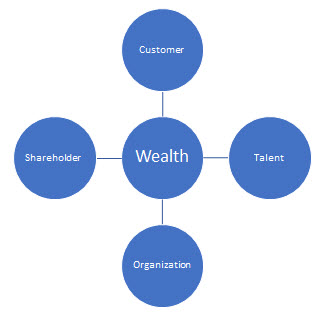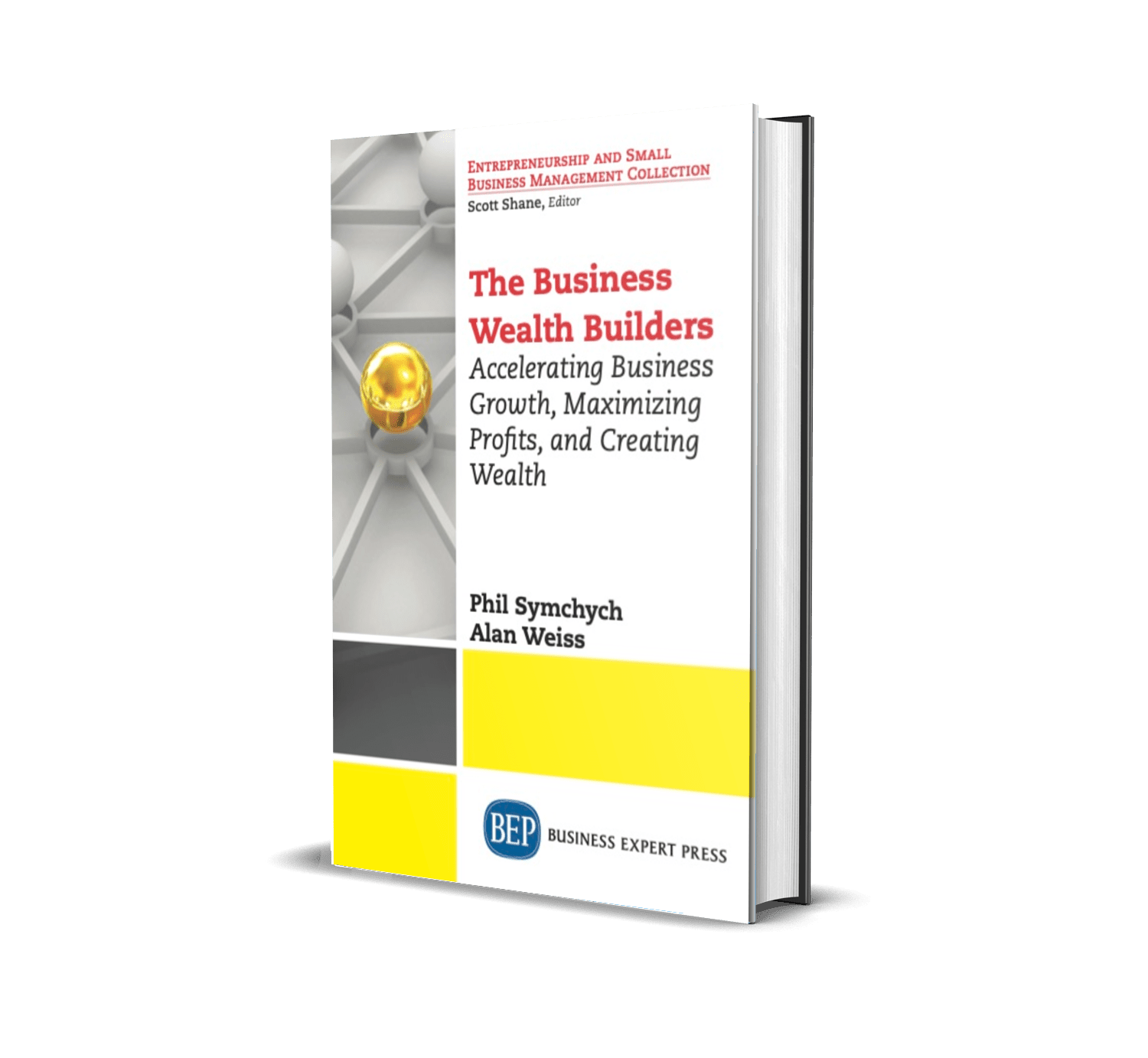2019 is fast approaching. Is your business ready for 2019?
Do you have a…(wait for it…four letter word coming)…PLAN?
When I first started consulting in the early 1990s, I used to prepare thorough and lengthy 30 + page business plans.
The bankers loved them because it gave them all of the information they needed for loan applications. But clients were overwhelmed and didn’t know what to do with everything because there wasn’t a clear action plan.
Today, I work much faster and produce much less paper. The best business plan fits on one page (both sides if absolutely necessary, but preferably not). The plan is focused on the top priorities. It has metrics, obstacles, resources and actions. It does not include any extraneous information. None.
Business plans are best prepared for external investors. Business Wealth Builder® plans are prepared for executives, shareholders, and boards to focus on priorities, measure performance, and improve results. These Business Wealth Builder® plans focus on building business wealth for companies and shareholders.
Today’s article is about helping you develop a one-page-plan using my Business Wealth Builder® system.
The Framework
The framework is based on the four pillars of business wealth.
Figure 19.1 Business Wealth Builder Framework

Feel free to add your own definitions to this list.
- Customer wealth
- the strength and value of your customer relationships
- written contracts
- whether you’re proactive or reactive
- whether you’re a strategic partner sole-sourcing unique value or a commodity vendor competing on price
- the customer’s cost of switching
- the threat of switching, and
- ensuring you have multiple levels of relationships with your best customers.
- Talent wealth
- the strength of your culture to attract and retain your best talent
- grooming successors for all positions, training and development
- showing people how they contribute, and
- recognition (the last two don’t cost much money and are extremely important in creating culture).
- Organization wealth
- your company’s brand
- reputation
- momentum
- systems and procedures
- intellectual property
- resources (very important is your information system)
- capacity and scalability
- financial position
- balance sheet health, and
- most importantly, speed and leverage to execute your strategies, launch new offerings, and attract new customers.
- Shareholder wealth
- valuation, what is your business worth to an internal (family or employee) buyer, to a financial buyer, and to a strategic buyer? The value should increase as you go through the list.
- Other factors include how attractive your company is to a buyer
- how ready you are to acquire or be acquired (you don’t need to be on the market to be ready for opportunities)
- governance
- legal and tax structures
- intercompany transactions (get rid of them)
- shareholder agreements (written)
- exit options and strategies.
It’s structured as a framework because you need all of the pieces for a solid foundation. Some companies ignore the employees and the shareholders in their strategies. That’s a serious oversight that could topple the company.
This framework can help you stay focused on what is most important for 2019 and beyond, because it deals with the most important players: customers, employees, and shareholders. Focusing on their short-term and long-term interests will help you to set your strategy.
The Process
The keys to having a strong 2019 include:
- Assess 2018 results, successes, challenges.
- What worked and didn’t work?
- How did you perform against your 2018 plan?
- Highlight your wins to increase confidence and momentum and to overcome the constant negative news everyone hears all the time.
This is your foundation and starting point.
- Identify how to replicate your successes.
- This easy step is often overlooked because you might be solving problems and fixing weaknesses.
- Always build on your strengths!
These are your rockets.
- Clarify your top three to five priorities.
- Define the strategic positions and ideal outcomes.
- Identify the metrics of progress for each priority.
- Post the priorities and metrics.
This is about where you’re going and why.
- Identify the obstacles.
- What are the external and internal obstacles?
- Check for conflicting objectives such as high growth at low margins with tight working capital.
- Be prepared for challenges.
This is the reality check.
- Focus your people on the top priorities and staying the course.
- Consistently communicate the top priorities.
- Always measure performance on the top priorities.
- Don’t wander off to easier goals, tasks or distractions such as email, social media, the latest technology.
This is management’s role: to allocate resources (time, people, attention, energy) in order to achieve the results as quickly and efficiently as possible.
- Ensure individual employee goals are aligned with corporate goals and properly utilize the employee’s natural talents and interests.
- The HR department can measure and incent in lots of ways.
- Make sure the incentives are measureable and aligned with strategy.
This is your secret weapon: alignment.
- Analyze the information people need to make decisions.
- Make sure they’re receiving this information frequently (at least weekly).
- Faster information yields faster decision making which produces faster results.
This is the premium fuel for high performance.
- Hold people accountable for results.
- Results are measured and reported on a regular basis.
- It’s easier than it sounds.
- By posting the priorities, metrics, and results with timely and accurate information, people can’t escape accountability.
This is empowered accountability where people can see their own progress and make adjustments when necessary.
These key steps will help you to plan and have a great 2019!
How does this process compare to the one you’ve used in your company?
Many companies are good at some of the points. Fewer are good at all of the points. Combining the framework and the process will help to strengthen your planning processes.

